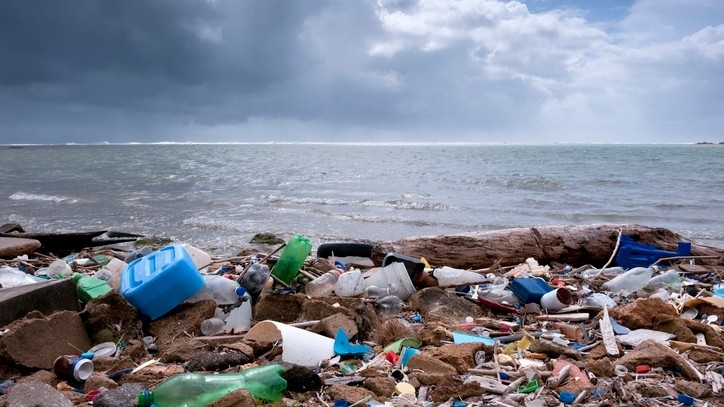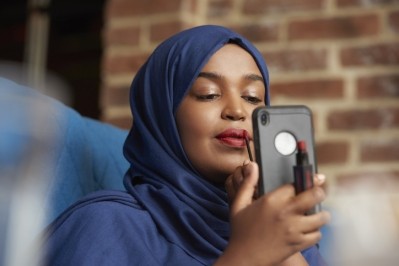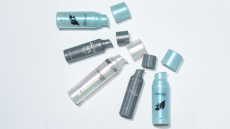How Greenpeace plastic circularity report impacts beauty and personal care

The environmental action group released a report in October on claims of circularity in the plastics industry. The thesis of the report is that considering current access to recycling, recycling rates and the state of the plastic recycling industry, plastic circularity is far from achievable.
According to a similar Greenpeace report from 2020, plastic circularity is challenging to achieve because plastic collection, sorting and processing are not economically incentivized as the expansion of plastic production lowers the cost of virgin resin.
“That prediction has proven true as the U.S. plastic recycling rate has continued to decline,” the report read. “Since 2020, an even greater barrier to plastic recycling than poor economics has come into focus through scientific research and testing: the toxicity of recycled plastic.”
Mechanical and chemical recycling frequently fails
According to the report, mechanical and chemical recycling largely don’t work because plastic waste is:
Extremely difficult to collect
Virtually impossible to sort for recycling
Environmentally harmful to reprocess
Often made of and contaminated by toxic materials
Not economical to recycle
In CosmeticsDesign's previous coverage, Chris Layton, sustainability director for plastics and circular solutions at advanced plastic recycler Eastman, said it is a challenge for the company to source enough plastics for new cosmetics packaging.
"Only 9% of plastic was recycled globally in 201921 and only 5–6% of plastic waste was recycled in the U.S. in 2021."
-Greenpeace "Circular Claims Fall Flat Again" report
The challenges behind actually recycling plastic mean most waste put into a recycling bin ends up in landfills around the world, rePurpose Global CEO Svanika Balasubramanian told CosmeticsDesign in previous coverage.
According to Balasubramanian, rePurpose found that roughly 75% of plastic recycled in countries like the US, Canada, the UK and Ireland ends up in landfils in countries like India, Indonesia and Vietnam.
Evidence shows plastic waste poses toxicity dangers, particularly in underdeveloped and developing countries with poor waste management. One study by the charity organization Tearfund estimates that 400,000 to a million people die annually from poor waste management.
Additionally, the Greenpeace report found PET and HDPE are the only types of plastic accepted at all recycling facilities in the US, but only 60% of the US population has access to municipal trash collection that accepts those plastic types.
All other plastic types have significantly lower municipal collection accessibility rates, with the highest being 29% and all others below 10% or not collectible at all.
Governments and industries need to address single-use plastic
The Greenpeace report said that, given the evidence that plastic recycling is not broadly effective, industries that presently rely on single-use plastics have to create other solutions.
“The failure of the concept of plastic recycling is finally becoming impossible for the companies and industry associations that promote it – and the nongovernmental organizations that they fund for this purpose – to ignore,” the report read.
Pact Collective told CosmeticsDesign in previous coverage that circularity in beauty will mean refillable, reusable and functionally recyclable packaging.
“The biggest hurdle isn’t just specific to beauty, but to all industries, and it is that our current economic model is linear: take-make-waste,” Pact said. “This model functions as if we do not have finite resources, which of course is not the case, and as a result, encourages overconsumption.”
Brands across personal care are trying refillable models, with some multinationals running pilot products and indie brands focusing on fully refillable lines.
Additionally, some states like California have enacted legislation that may eventually push brands to use more refillable or non-plastic packaging options, according to Ameripen.
![As beauty transitions into 2023, its sharp focus on diversity and sustainability will continue to change the 'business as usual' approach [Getty Images]](/var/wrbm_gb_food_pharma/storage/images/_aliases/wrbm_medium/publications/cosmetics/cosmeticsdesign.com/article/2023/01/06/personal-care-products-council-president-talks-2023-beauty-trends-in-diversity-environment-and-regulation/16060781-1-eng-GB/Personal-Care-Products-Council-president-talks-2023-beauty-trends-in-diversity-environment-and-regulation.jpg)
![The adoption of the Kunming-Montreal Global Biodiversity Framework (GBF) at last month's COP15 should provide a stronger means for implementation of finance and strategies to protect biodiversity [Getty Images]](/var/wrbm_gb_food_pharma/storage/images/_aliases/wrbm_medium/publications/cosmetics/cosmeticsdesign.com/article/2023/01/03/un-biodiversity-conference-cop15-in-montreal-results-in-historic-deal-to-protect-people-and-planet/16052336-1-eng-GB/UN-Biodiversity-Conference-COP15-in-Montreal-results-in-historic-deal-to-protect-people-and-planet.jpg)
![Weleda has created a small internal startup to build out fresh innovations across packaging and formulation [Getty Images]](/var/wrbm_gb_food_pharma/storage/images/_aliases/wrbm_medium/publications/cosmetics/cosmeticsdesign-europe.com/article/2022/12/05/weleda-r-d-head-says-circular-green-beauty-possible-with-sustainable-definitions-and-beauty-collaboration/15997160-1-eng-GB/Weleda-R-D-head-says-circular-green-beauty-possible-with-sustainable-definitions-and-beauty-collaboration.jpg)










